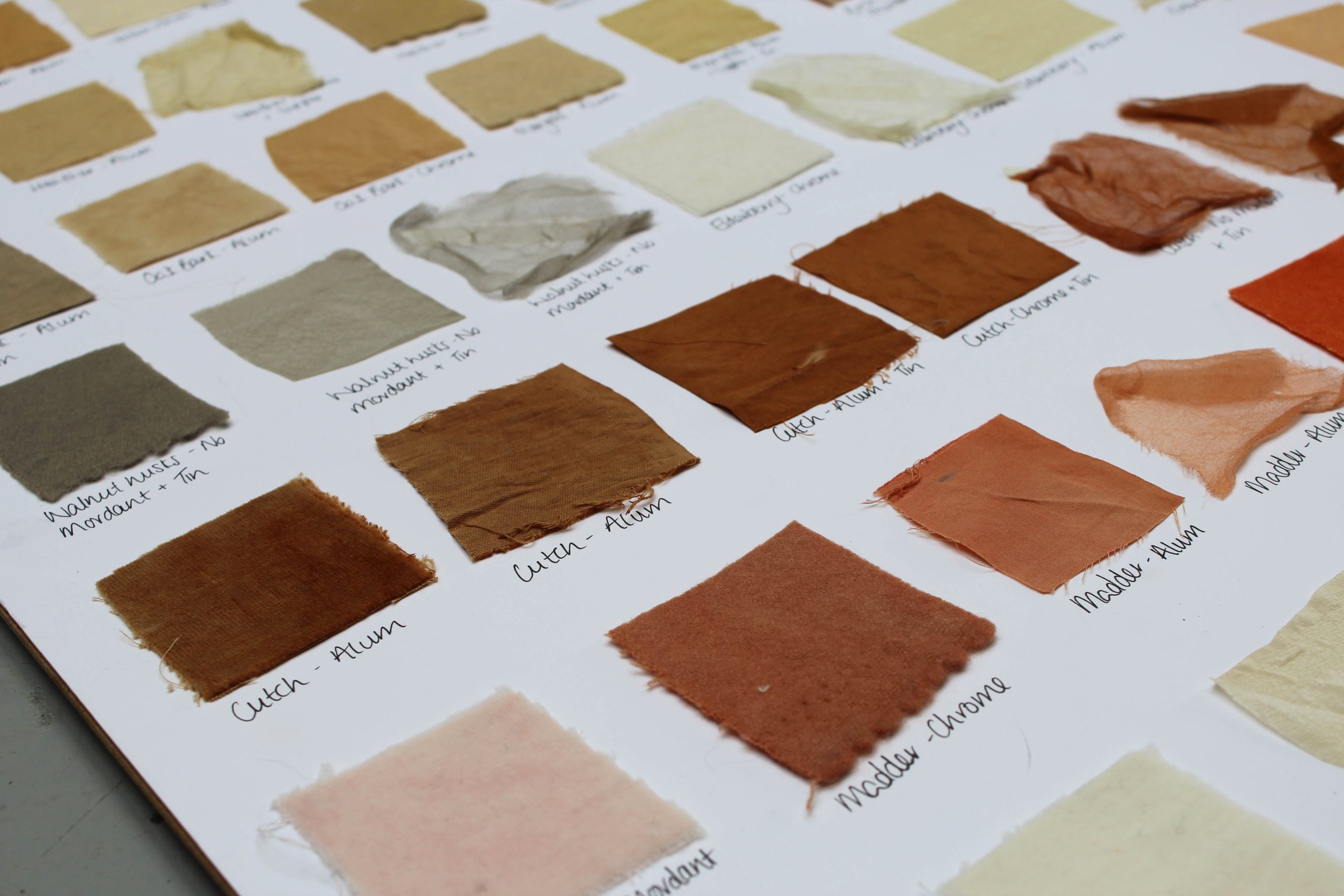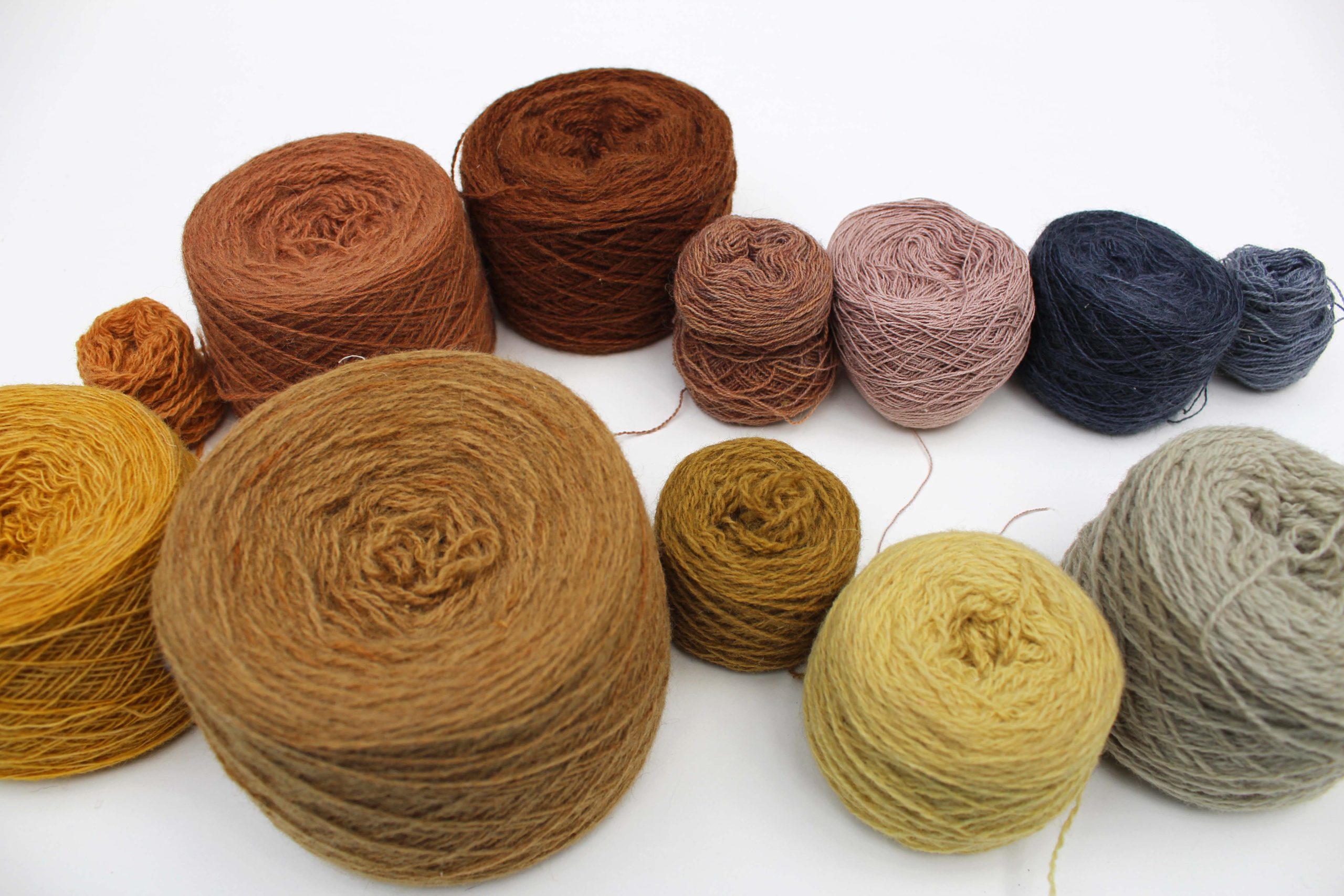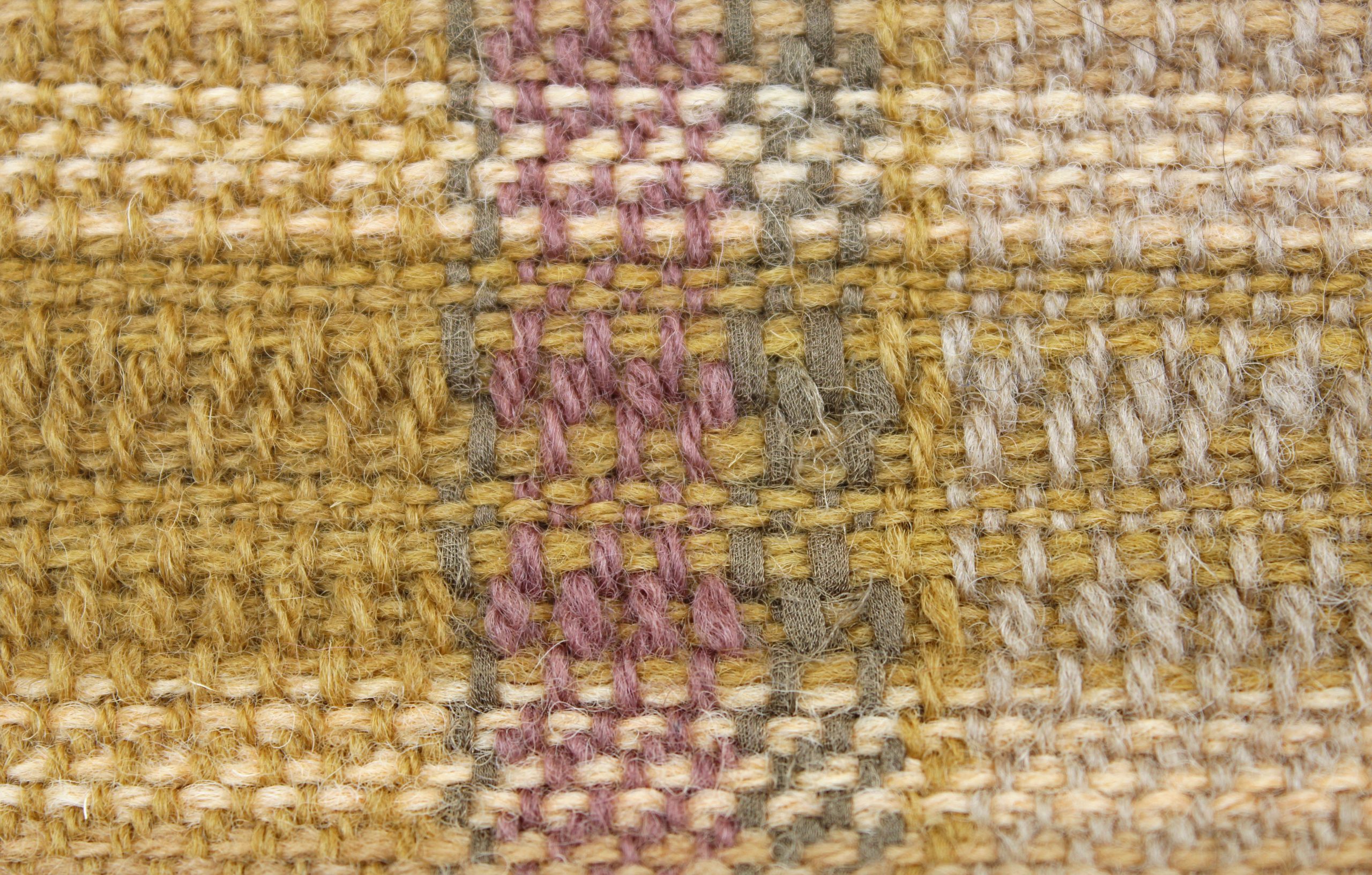27 Mar 2019
Natural dying was a key catalyst in the beginning of Araminta’s weaving journey, and the colours she developed continue to influence her work today. The link between Scottish textiles and the natural world is something she continues to pursue in her custom tweeds and tartans as well as her Signature handwoven designs.

Textiles have always been intertwined with the natural world – from the wonderful variety of fabrics created using plant and animal fibres, to the amazing range of colours our ancestors achieved with dyes made from roots, berries and mosses.
When Araminta was still a student she began looking into the process of natural dyeing, and was captivated by the idea of recreating this tangible link between the cloth and landscape. As the fabrics we use everyday have become increasingly synthetic and mass produced, we have lost much of this connection to the natural world.
The ancient craft of natural dyeing offered her the opportunity to begin rediscovering this link between her two great loves; textiles and the great outdoors.
She began as many others have done before her; by drawing on the wisdom of an older generation. She was lucky enough to spend several weeks learning from Hillary Menzies; an amazing tweed designer and weaver based in the Scottish Borders. Hillary is responsible for not only teaching her all about natural dyeing, but also was the first person to encourage her to begin designing tweed.

Selection of wool dyed with roots, berries and leaves for weaving tweed.
Tweed’s history began with natural dyes; the fleeces of local sheep dyed with plants from the surrounding countryside, then spun and woven into the distinctive patterns we recognise today. Using the natural world to create something new wasn’t a choice back then – it was necessity – but the innovation of those early designs has led to tweed being recognised and worn around the world.

Back to the origins of tweed; Araminta began handweaving designs in naturally dyed yarns.
Araminta loved the idea of coming back to these rural beginnings, with colour, pattern and texture being combined in a woven fabric that reflected the landscape. Weaving with fibres she had naturally dyed herself got her hooked on creating tweed, and the rest is history. You can read more about how she designs unique tweeds here.
It makes sense that to use natural dyes you need to start with fabrics or yarns that are natural too. Typically animal based fibres (silk and wool) absorb more of the dye and so take on a much deeper colour than cellulose based fibres (cotton, linen, bamboo).
However there is great variety in the way each fabric will react, and so it is best to do lots of experimenting! Try different weights and finishes of fabric such as cotton velvet, silk chiffon and wool crepe – you may even find they turn out completely different colours.
Araminta found a book called ‘Traditional Scottish Dyes’ by Jean Fraser an invaluable source of plant dye recipes. It offers a comprehensive list of dye plants that grow in Scotland, their properties and where to find them; as well as some history, lovely illustrations and practical tips of how to get started. You should be able to find most of the plants you need growing wild in the countryside; embrace the challenge of scrambling down slopes to pick wild brambles and elderberries, hunting down tansy and comfrey in fields and hedgerows. Many you can also find in your kitchen cupboard like onion skins, walnut hulls and even beetroot, which surprisingly produces the most beautiful delicate yellow.

Preparing different dye recipes: foraged petals, peel, berries and leaves.
You will need a well ventilated space as natural dying is a rather smelly occupation! You will also need pots and pans that you are happy to dedicate to the cause – so don’t make your dinner in them afterwards! Tracy Majika has written a great blog with step by step instructions on how to create your own naturally dyed textiles, do check it our here.
These scary sounding substances are basically the things you add to a dye to help the colour stick. They can often be metal based such as iron or tin, or you can use oxalic acid which can be created by boiling down rhubarb leaves. These require a bit of caution so best to follow a recipe such as those in the book mentioned above.
Finally, HAVE FUN! You can’t always predict what you are going to get with the natural dying process, but we think this is one of its joys. Getting outside, seeing what you can gather and creating something new from what you have found is not something we get to experience all that often. We hope you enjoy discovering for yourself the riches our natural world has to offer!
"*" indicates required fields